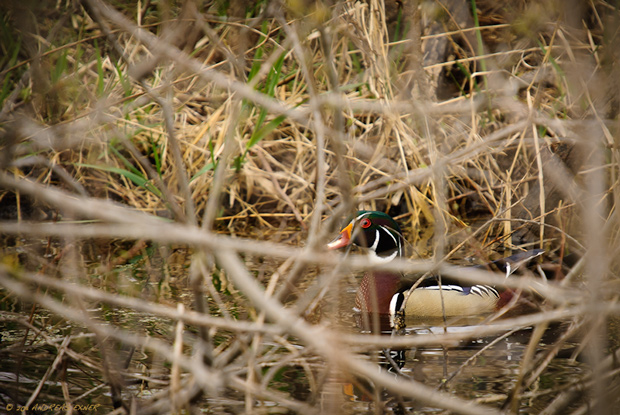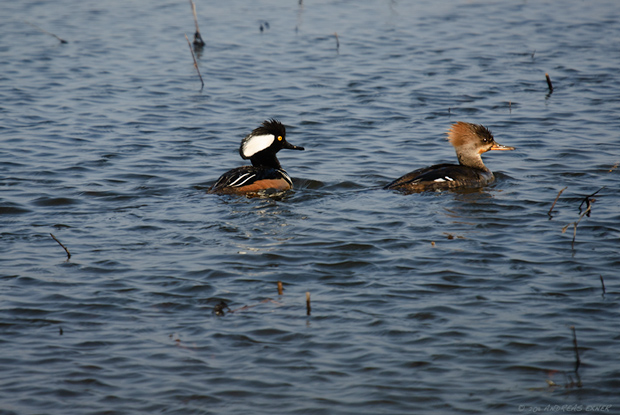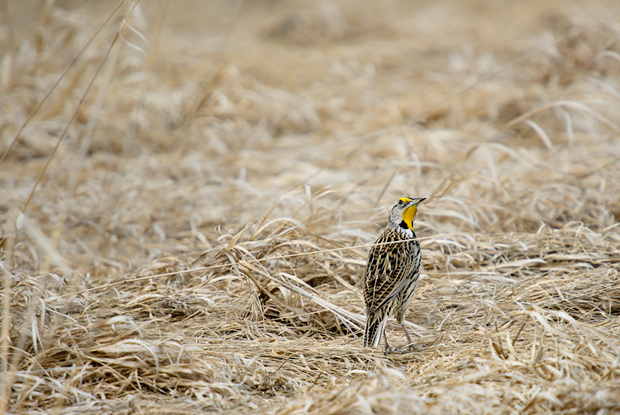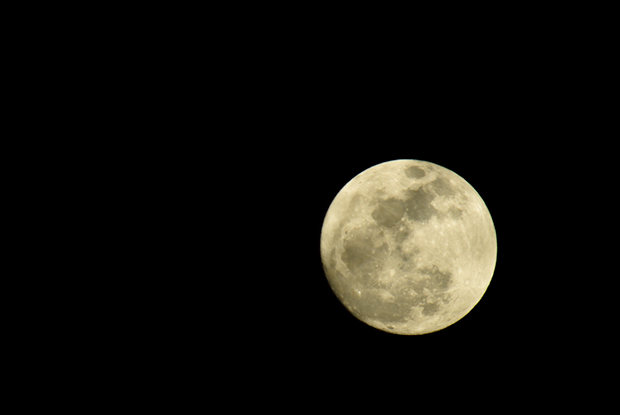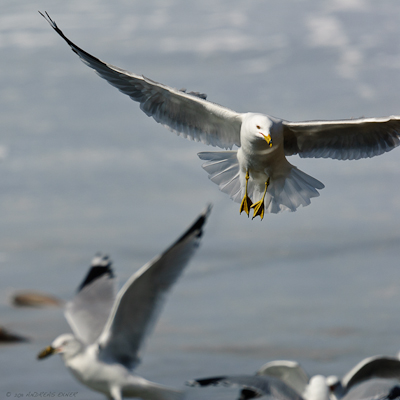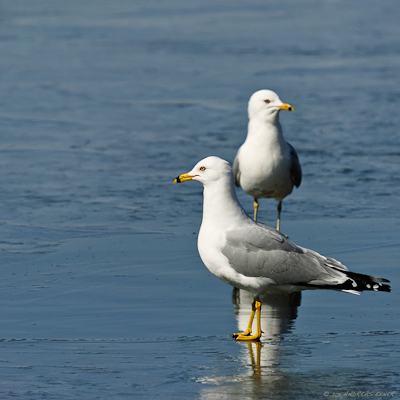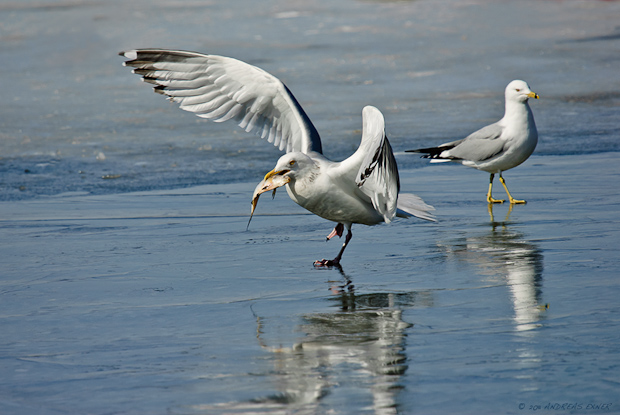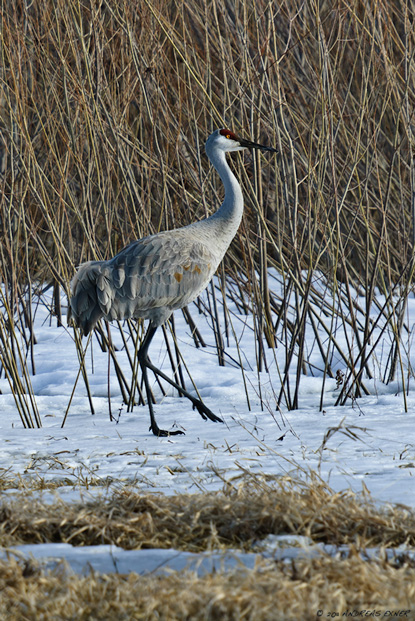We haven't seen the sun here for five days. The sky is covered with grey clouds every day. There are still patches of old snow on the ground, and they look, of course, grey as well. But we also can see the first signs of the upcoming spring. A big flock with hundreds of American Robins is foraging in the woods around our house. We have seen them actually several times throughout this winter. It seems they don't migrate much further south anymore. But their appearance is different now. They have started singing and make a lot more noise.
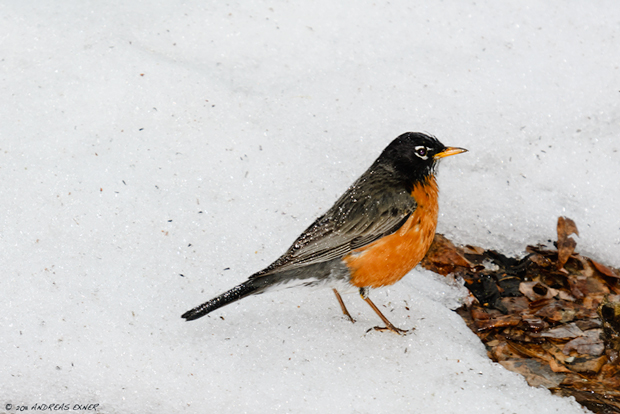
The natural light in this kind of weather is miserable in the woods and not enough for a sharp image of the Robins. I just acquired a Better Beamer flash extender for exactly this kind of a scenario, where I'm depending on a focal length of 400 -500 mm and the reach of a normal flash is insufficient.
It was raining just before I started shooting and the flash is reflected in the rain drops on the bird's feathers. Not that I really like it, because it makes the flash too obvious, but at the other hand, the sparkling of the little rain drops helps to tell the story about spring, which is hopefully not too far away anymore.
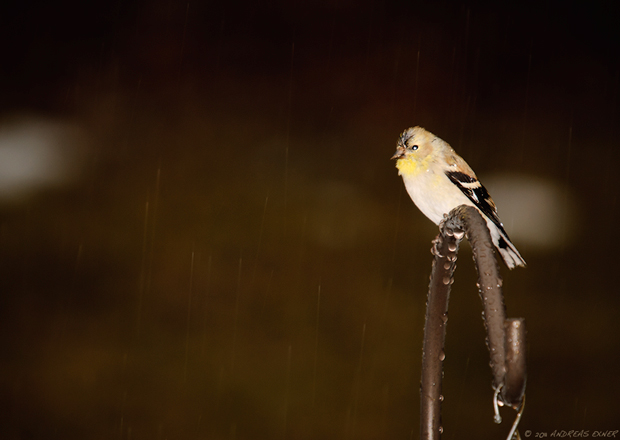
For this first test I had the flash directly mounted to the hot shoe of the D200. You can tell by looking at the picture of the American Goldfinch sitting in the rain that it may need a different approach. I don't like how the eye of the bird turned out. I need to do more tests to see how a different flash-to-camera angle would improve the outcome. What else is wrong with the finch image? The picture was shot using front-curtain sync flash, which makes the rain drops looking unnatural. It seems they move in the wrong direction. I usually shoot rear-curtain flash but had changed my camera settings for some reason. Oh well, …next time!
So far, I like how the Better Beamer flash extender really increases the reach of the SB600 flashlight, how the colors start to pop, and for this particular weather, make the grey finally disappear.


